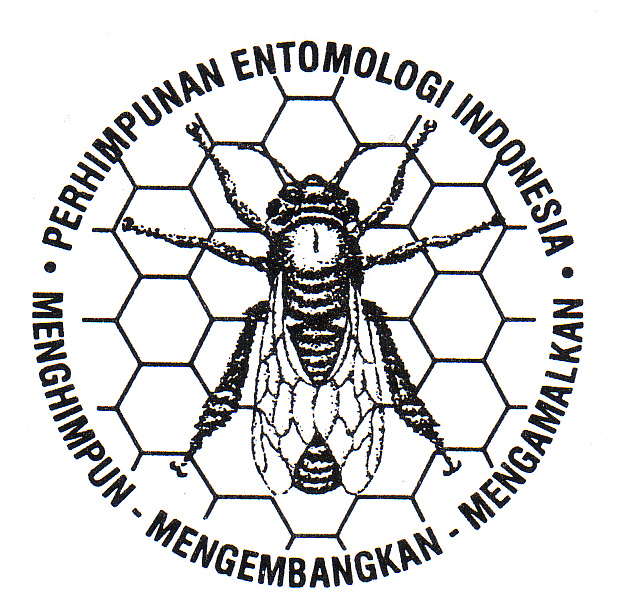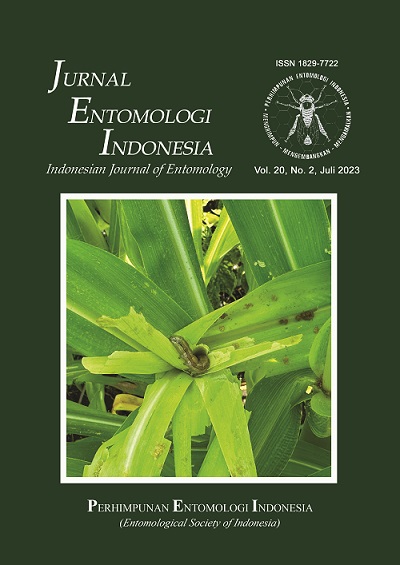Eksplorasi dan uji keragaan parasitoid penggerek buah kapas Pectinophora gossypiella Saunders (Lepidoptera: Gelechidae)
DOI:
https://doi.org/10.5994/jei.1.1.18Keywords:
Gossypiun hirsutum, Pectinophora gossypiella, Tichogrammatoidea, ApantelesAbstract
Pink bollworm, P. gossypiella, is a main pest of cotton that causes boll damage up to 70%. Recommended IPM has not effectively control this pest. The use of parasitoids of this pest is one of strategy to manage this pest population as using chemical control is expensive and caused secondary pest. This research objective is to study some biological aspects of pink bollworm parasitoids by doing exploration of the parasitoids in cotton growing areas and testing the potential candidates as biocontrol agents. The activity was conducted from April - December 2001. The research was conducted in two steps: survey and laboratory tests. The survey was conducted in East Java (Asembagus and Lamongan), Central Java (Brebes) and South Sulawesi (Bone) by collecting pink bollworm eggs and identifying the emerged parasitoids. Laboratory tests were done in Biological Control Laboratory of ITFCRI, Malang, consists of reproductive performance aspects. We found two and five species of egg and larval parasitoids, respectively. Parasitism level of egg was 81% by Tichogrammatoidea spp. and that of larva was 24% by Apanteles sp. These two parasitoids are predominant and found in all cotton growing areas. Tichogrammatoidea spp. have opportunity to be used as biocontrol agent in release program, while Apanteles sp. would have valuable role in conservation approach.Downloads
Published
2017-02-23
How to Cite
nurindah, nurindah, Sunarto, D. A., & Sujak, S. (2017). Eksplorasi dan uji keragaan parasitoid penggerek buah kapas Pectinophora gossypiella Saunders (Lepidoptera: Gelechidae). Jurnal Entomologi Indonesia, 1(1), 18. https://doi.org/10.5994/jei.1.1.18
Issue
Section
Articles
License
Authors who publish with this journal agree to the following terms:
- Authors retain copyright and grant the journal right of first publication with the work simultaneously licensed under a Creative Commons Attribution 4.0 International License that allows others to share the work with an acknowledgement of the work's authorship and initial publication in this journal.
- Authors are able to enter into separate, additional contractual arrangements for the non-exclusive distribution of the journal's published version of the work (e.g., post it to an institutional repository or publish it in a book), with an acknowledgement of its initial publication in this journal.
- Authors are permitted and encouraged to post their work online (e.g., in institutional repositories or on their website) prior to and during the submission process, as it can lead to productive exchanges, as well as earlier and greater citation of published work (See The Effect of Open Access).








